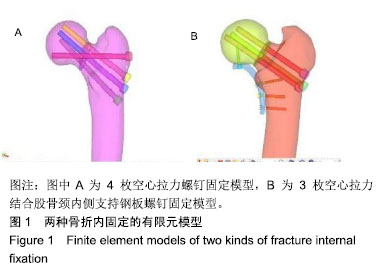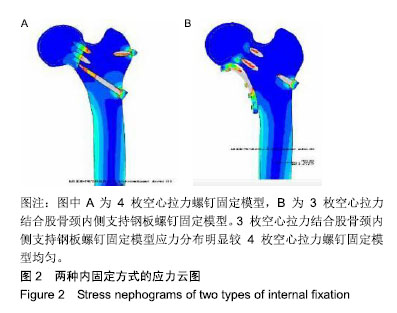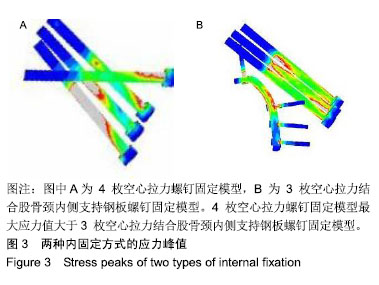| [1] 张英泽.成人髋部骨折指南解读[J].中华外科杂志,2015, 53(1): 57-62. [2] Zhang Y. Clinical epidemiology of orthopedic trauma. Thieme, Stuttgart & New York, 2012. [3] Florschutz AV,Langford JR,Haidukewych GJ,et al.Femoral neck fractures: current management.J Orthoped Trauma. 2015;29(3): 121-129. [4] 李波,邹正,罗文中.不同股骨颈骨折分型与中青年股骨颈骨折预后的相关性研究[J].重庆医学,2013,42(3):297-298. [5] 刘儒. Pauwels Ⅲ型股骨颈骨折的手术方式选择及近期疗效比较[J]. 广州医科大学学报,2017,45(1):49-52. [6] Liporace F, Gaines R, Collinge C, et al. Results of internal fixation of pauwels type-3 vertical femoral neck fractures. J Bone Joint Surg. 2008; 90(8): 1654-1659. [7] Jo S, Lee SH,Lee HJ. The Correlation between the fracture types and the complications after internal fixation of the femoral neck fractures. Hip Pelvis.2016;28(1) :35-42. [8] Stoffel K, Zderic I, Gras F, et al. Biomechanical evaluation of the femoral neck system in unstable pauwels III femoral neck fractures:, a comparison with the dynamic hip screw and cannulated screws. J Orthop Trauma.2017;31(3):131. [9] Magone KM, Owen JK, Kemker BP, et al. A model to evaluate Pauwels type III femoral neck fractures. Proc Inst Mech Eng H. 2018;232(3):310-317. [10] Duckworth AD,Bennet SJ, Aderinto J,et al. Fixation of intracapsular fractures of the femoral neck in young patients : risk factors for failure. J Bone Joint Surg Br. 2011;6:811-816. [11] 虎伟山,李山珠,袁锋.三枚和四枚空心钉内固定治疗股骨颈骨折的比较研究[J].中国骨与关节损伤杂志,2013,28(4):307-309. [12] 李文龙,梅沉成,范亚楠,等.1/3管状板联合空心加压螺钉内固定术治疗青壮年PauwelsⅡ、Ⅲ型股骨颈骨折43例[J].山东医药,2016,56(27): 92-94. [13] Ye Y, Ke C, Kewei T, et al. Medial buttress plate augmentation of cannulated screw fixation in vertically unstable femoral neck fractures: surgical technique and preliminary results. Injury. 2017; S0020138317305302. [14] Mir H, Collinge C. Application of a medial buttress plate may prevent many treatment failures seen after fixation of vertical femoral neck fractures in young adults. Medical Hypotheses. 2015; 84(5):429-433. [15] 王岩,唐佩福,蔡谓,等译.坎贝尔骨科手术学[M].11版.北京:人民军医出版社, 2009:2570. [16] 郑翔,许锦煌,黄建荣. 两种非解剖复位内固定Pauwels Ⅲ型头下型股骨颈骨折的有限元分析[J].中国临床解剖学杂志, 2017,35(6):665-670. [17] 张浩,史雪峰,杨春宝,等. 三枚与四枚螺钉置入治疗Pauwels Ⅲ型股骨颈骨折的有限元分析[J].中国组织工程研究,2016,20(26):3897-3902. [18] ]张晟,胡岩君,余斌.不同内固定方式固定Pauwels Ⅲ型股骨颈骨折模型的有限元分析[J].中国矫形外科杂志,2017,25(2):163-169. [19] 张保焜,张伟.股骨颈骨折分型与治疗[J]. 国际骨科学杂志,2017,38(3): 149-153. [20] Duckworth AD,Bennet SJ,Aderinto J,et al.Fixation of intracapsular fractures of the femoral neck in young patients: risk factors for failure.J Bone Joint Surg Br. 2011;93(6):811-816. [21] Carpintero P,Caeiro JR,Carpintero R,et al.Complications of hip fractures: A review. World J Orthop.2014;5(4):402. [22] Gümüstas SA,Tosun HB,Agir I,et al.Influence of number and orientation of screws on stability in the internal fixation of unstable femoral neck fractures.Acta Orthop Traumatol Turc.2014;48(6): 673-678. [23] 胡家朗,李绍刚,陈明,等.动力加压锁定钉板系统与空心拉力螺钉固定PauwelsⅢ型股骨颈骨折的生物力学比较[J].中华骨科杂志,2018, 38(21):1322-1329. [24] 盛伟,纪爱敏,陈长胜,等.基于正交试验的股骨干骨折内固定系统螺钉布局的参数化研究[J].医用生物力学, 2018, 33(1): 62-69. [25] 程彬,史柏娜,周江军,等.低弹性模量新型组合式锁定加压钢板固定股骨粉碎性骨折的生物力学研究[J].中华创伤骨科杂志,2018,20(9):798-802. [26] Hu P,Wu T,Wang HZ,et al. Biomechanical comparison of three internal fixation techniques for stabilizing posterior pelvic ring disruption: a 3d finite element analysis. Orthop Surg.2019;11(2): 195-203. [27] Erdem S,Gür M,Kaman MO. Static and dynamic analyses of fracture fixation bone-plate systems for different plate materials and dimensions. Biomed Mater Eng.2018;29(5) :611-628. [28] 李颖,黎立,李俊玲,等.力学环境对骨折早期骨折端间充质干细胞募集的影响[J].国际骨科学杂志,2016,37(3):198-202. [29] Marsell R, Einhorn TA.The biology of fracture healing. Injury. 2011; 42(6):551-555. [30] Currey JA,Mancuso M, Kalikoff S, et al.Controlled cyclic compression of an open tibial fracture using an external fixator affects fracture healing in mice. J Biomech Eng.2015;137(5): 051011. [31] Yamanishi Y, Yamaguchi S, Imazato S, et al. Effects of the implant design on peri-implant bone stress and abutment micromovement: three-dimensional finite element analysis of original computer-aided design models. J Periodontol. 2014;85(9) :e333-338. [32] Bottlang M, Doornink J, Lujan TJ, et al. Effects of construct stiffness on healing of fractures stabilized with locking plates.J Bone Joint Surg Am. 2010;92:12-22. [33] 危杰,刘璠,吴新宝,等.骨折治疗的AO原则[M].上海:上海科学技术出版社,2010:26-27. [34] Kunapuli SC, Schramski MJ, Lee AS, et al. Biomechanical analysis of augmented plate fixation for the treatment of vertical shear femoral neck fractures. J Orthop Trauma.2015;29(3):144-150. [35] 丁文星,蔚芃,蒋科. 两种手术方式对PauwelsⅢ型股骨颈骨折近期疗效对比[J].四川医学,2018,39(5):534-538. [36] 许阳凯,魏艳珍.空心钉结合支撑钢板应用于PauwelsⅢ型股骨颈骨折的临床疗效[J].中外医学研究,2018,16(26):37-39. [37] Gümü?ta? SA, Tosun HB, A??r ?, et al. Influence of number and orientation of screws on stability in the internal fixation of unstable femoral neck fractures. Acta Orthop Traumatol Turc. 2014;48(6) : 673-678. [38] 魏志辉,马坤龙,张铭华.4枚空心钉与动力髋螺钉结合防旋螺钉内固定治疗股骨颈骨折的疗效比较[J].中国骨与关节损伤杂志,2017,32(2): 187-189. [39] Halawi MJ,Brigati D,McBride JM.et al.Surgical hip dislocation through a direct lateral approach: A cadaveric study of vascular danger zones. J Clin Orthop Trauma.2017;8(3) :281-284. [40] Ghijselings SG,Driesen R,Simon JP, et al.Distal extension of the direct anterior approach to the hip: a cadaveric feasibility study. J Arthroplasty.2017;32(1) :300-303. |
.jpg)



.jpg)